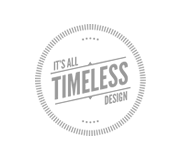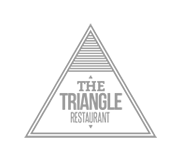How Much Of Your Site Is Accessible To The Visually Impaired?

An easy way to increase traffic to your website is to open it up to the accessibility of more users, such as those with with visual impairments. This would give you a much greater opportunity to get your website’s content out to a larger audience.
As of right now, accessibility standards are only legally enforced on government websites, but even corporations are already getting lawsuits from users for accessibility issues. So it probably won’t be long until all websites are regulated. With this in mind, it’s a good idea to get ahead of the pack and update your website to be more accessible now, so when it is legally mandated, you’ll be ready.
When creating an accessible website for users with visual impairments, you should first know the types of visual impairments that you need to take into account. The four types that you should should keep in mind when updating your website are: low vision, color blindness, partial blindness and total blindness.


Following these simple tips can help you create a website that visitors with visual impairments can use:
Assess Your Website
The best way to get started is by assessing the level of accessibility your website currently has. There are tons of programs out there to help you determine your website’s accessibility. These include Web Anywhere, Cynthia Says, aDesigner and WAVE.
This allows you to view your website as someone using a screen reader would view it. This will help you determine how well your website is interpreted for people with partial or total blindness.
This checks that your web page meets Section 508 standards and Web Content Accessibility guidelines.
This tool lets you reproduce your website to see it through a visually impaired perspective. This is a great design aid that will help point out what adjustments to make.
This is a totally free, user friendly tool that evaluates a website’s accessibility. There won’t be any long reports to sift through on your website’s accessibility. WAVE displays its recommended changes right on your page, using indicators that show where things need to be changed.
So, now you have determined what needs to be changed, but what next? When updating your website, make sure you are adjusting it to suit the needs of all of your visitors, which includes the visually impaired.
For Users with Low vision
Since screen magnifiers are a common way for people with low vision to access websites, when creating an accessible website, it’s important to keep these tools in mind.
- Avoid using scrolling or flashing text so visitors that are using a screen magnifier don’t have further difficulty accessing your content.
- Clearly mark the different parts of your website with borders and headings. This will enable people using screen magnifiers to easily navigate through and find the content that interests them.
- Avoid embedding text into your images because it will look fuzzy through a screen magnifier, in which the image beneath it will also look fuzzy. Try sticking to using higher resolution images or Cascading Style Sheets instead.
- Always order your content by value. Placing your most important content at the top of your website will not only make it easier for visitors with visual impairments to determine if they want to continue reading, it will also capture the interest of visitors quicker.
For Users with Color Blindness
An important fact to know about color blindness is that the most common type is red-green color blindness. Therefore, it is extremely important to avoid using them side by.

- AccessColor and Colorblind Web Page Filter are tools recommended tools that can assist you in choosing colors that are accessible for people with color blindness. Both of these tools will aid you in choosing colors that will enable people with color blindness to have an easier time accessing your website.
- Desaturate your website to view the contrast levels to see if the content is accessible for users with color blindness.
- Try to use a variety of elements to mark the different parts of your website, like your headings and all types of links. Instead of using just color to mark these, add underlines, icons, different fonts, etc.
For Users with Partial and Total Blindness
Screen readers are a very commonly used tool for users with partial and total blindness.
- Users can use screen readers to interperet images to words, but only if the images have alt and title tags. So, make sure that all of your images can be interpreted by adding tags that are descriptive enough to be understood.
- Because screen readers interpret your source code for their users, it’s important to put your source code is in the correct arrangement for the screen reader to interpret it the way its meant to be read.
Other steps to take to make your website accessible to the partially and totally blind are:
- Make sure to use a validator to validate your HTML code. This not only keeps your code clean, but it also helps to ensure that alternate browsers such as screen readers can interpret it correctly.
- It’s easier for all users, regardless of sight, to visit a website with a short loading time. But it’s even more imperative for users with visual impairments. Try using fewer images or reducing the file sizes to cut down the loading time.

Conclusion
All in all, by making your site accessible to people with visual impairments, you can increase the number of users that can make use of your website. It’s also a great way to contribute to making the internet a place that anyone can use.
Related posts:
- Login om te reageren















